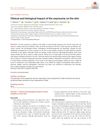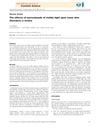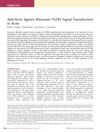Parasitic Angiosperms, Semagenesis, and General Strategies for Plant-Plant Signaling in the Rhizosphere
February 2009
in “
Pest management science
”
TLDR Reactive oxygen species are key for parasitic plant attachment and affect root development in various plants.
The study explored the role of reactive oxygen species (ROS) in the host attachment process of parasitic angiosperms, specifically through a mechanism called semagenesis. In Striga asiatica, ROS and host peroxidases oxidize monolignols at the host root surface, leading to the accumulation of para-benzoquinone products that induce the development of the haustorium, the attachment organ. The research found that semagenesis is a widespread plant-plant signaling mechanism affecting root development in both eudicots and monocots. The study also identified inhibitors of haustorial development that similarly inhibit benzoquinone-mediated root development in non-parasitic plants, suggesting a common mechanism for benzoquinone perception. These findings enhance the understanding of underground plant communication and suggest new strategies for managing parasitic angiosperms in agriculture.


